
How to Use LCD 16x2 attached i2c: Examples, Pinouts, and Specs
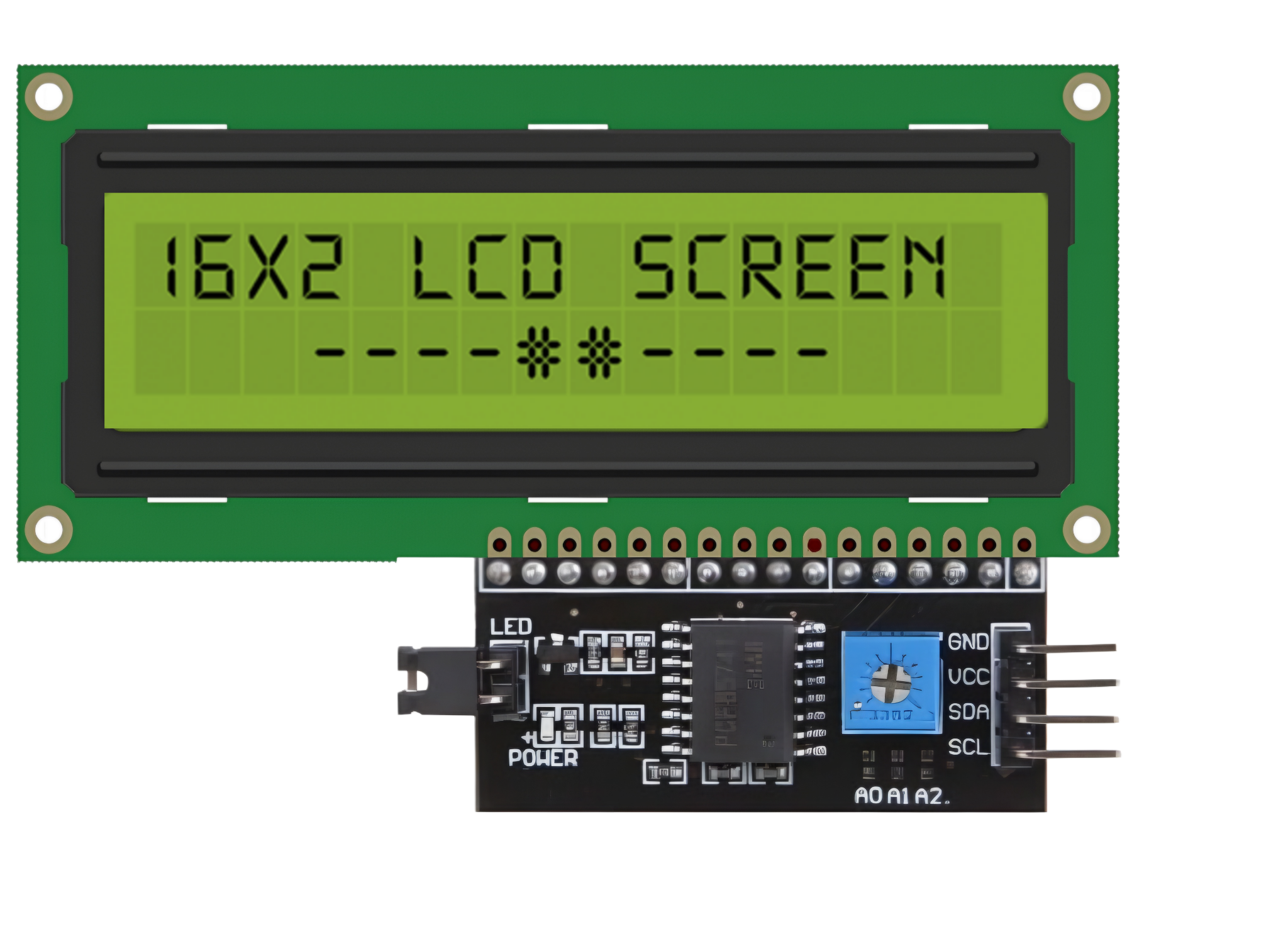
 Design with LCD 16x2 attached i2c in Cirkit Designer
Design with LCD 16x2 attached i2c in Cirkit DesignerIntroduction
The LCD 16x2 Attached I2C (Manufacturer Part ID: 1602A-I2C) is a 16-character by 2-line Liquid Crystal Display (LCD) module designed for efficient and user-friendly integration into electronic projects. This module uses the I2C (Inter-Integrated Circuit) interface, which significantly reduces the number of pins required for communication, making it ideal for microcontroller-based applications.
Explore Projects Built with LCD 16x2 attached i2c
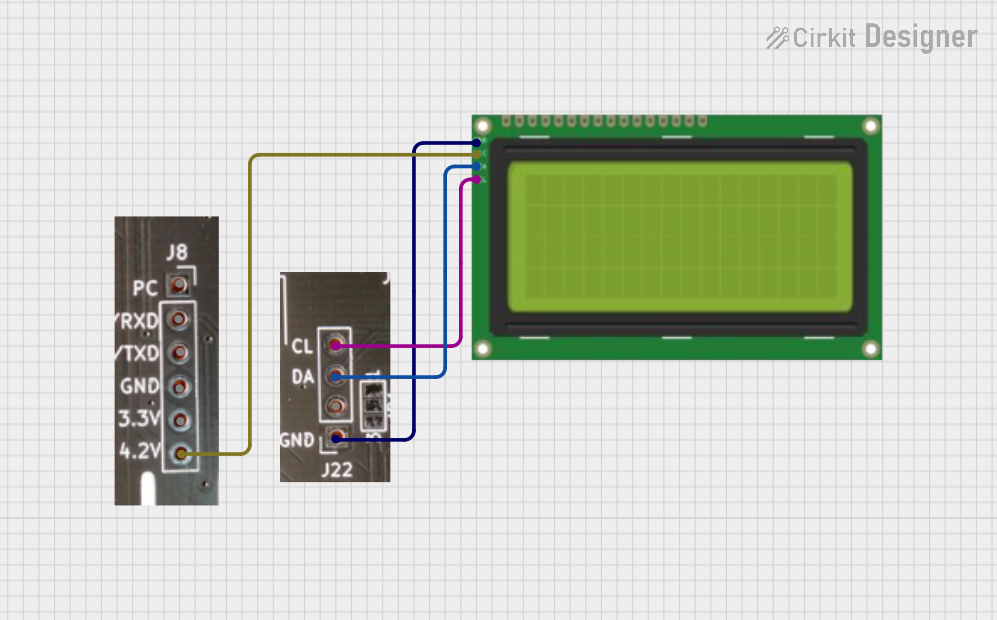
 Open Project in Cirkit Designer
Open Project in Cirkit Designer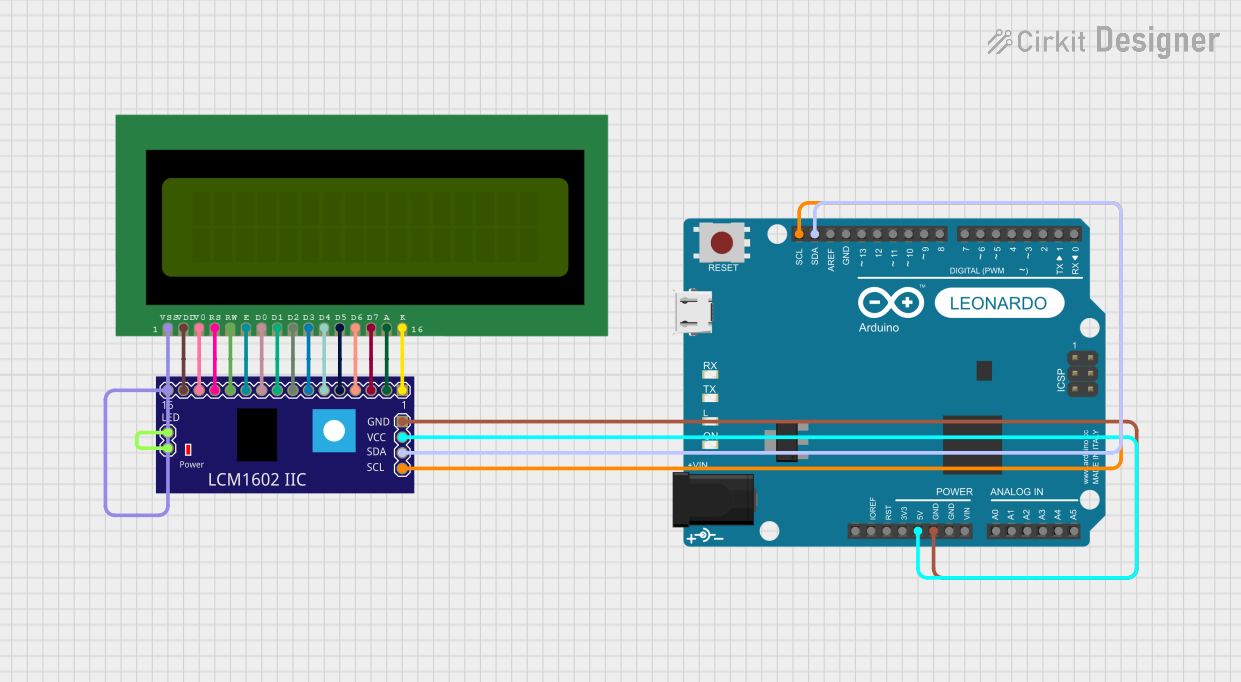
 Open Project in Cirkit Designer
Open Project in Cirkit Designer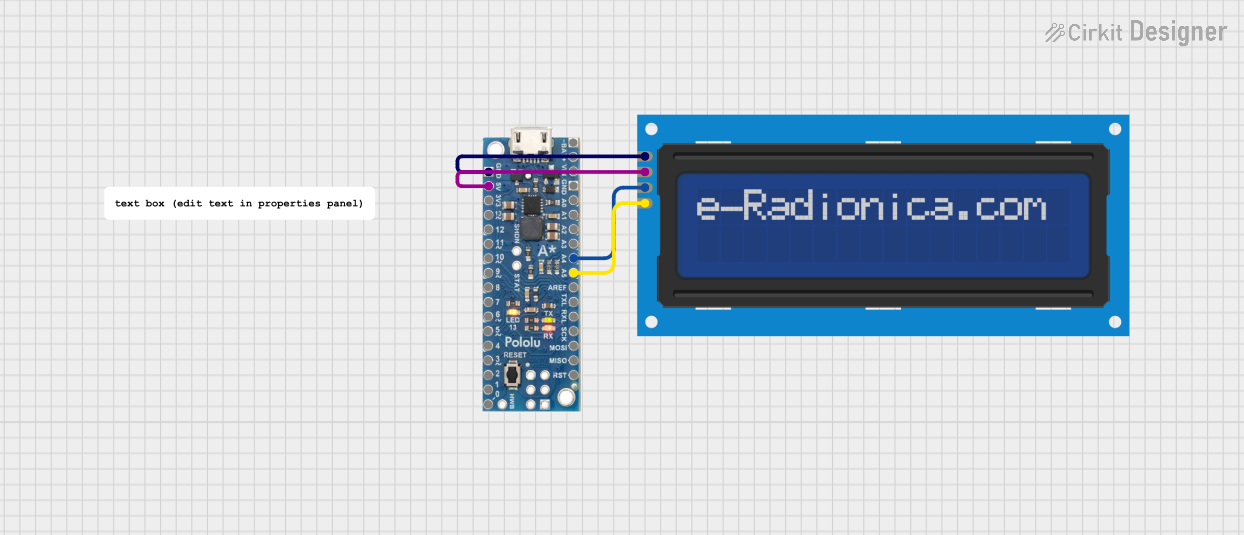
 Open Project in Cirkit Designer
Open Project in Cirkit Designer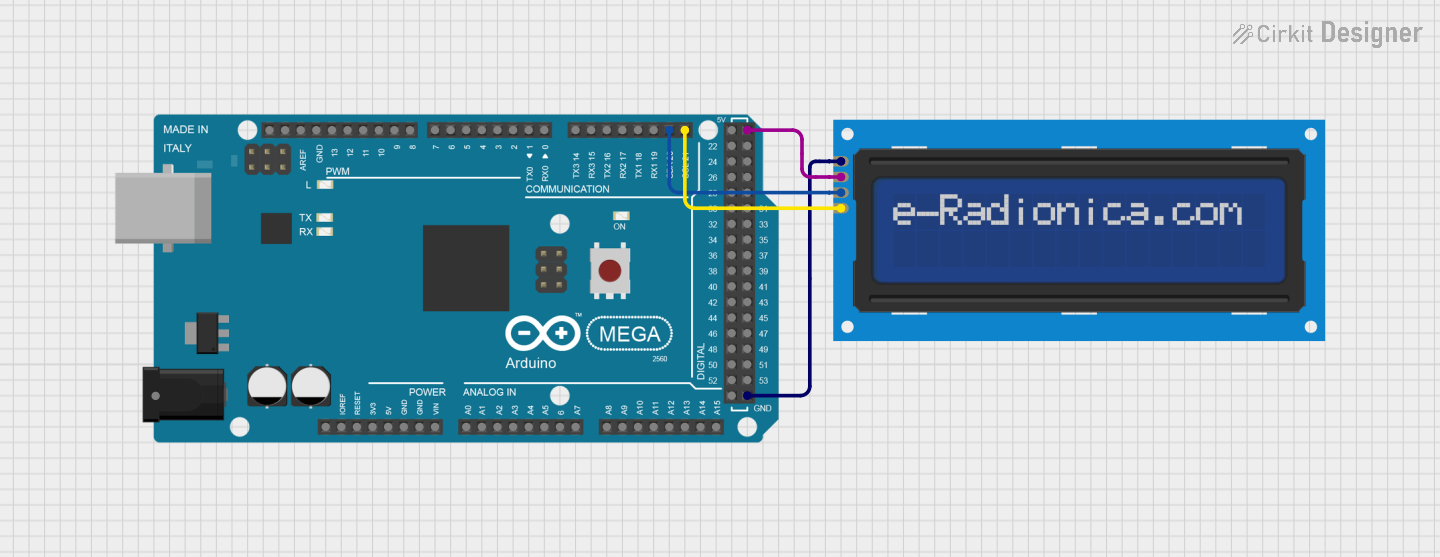
 Open Project in Cirkit Designer
Open Project in Cirkit DesignerExplore Projects Built with LCD 16x2 attached i2c

 Open Project in Cirkit Designer
Open Project in Cirkit Designer
 Open Project in Cirkit Designer
Open Project in Cirkit Designer
 Open Project in Cirkit Designer
Open Project in Cirkit Designer
 Open Project in Cirkit Designer
Open Project in Cirkit DesignerCommon Applications and Use Cases
- Microcontroller-based projects (e.g., Arduino, Raspberry Pi)
- Displaying sensor data, system status, or user interfaces
- Home automation systems
- Educational and prototyping purposes
- Industrial control panels
Technical Specifications
The following table outlines the key technical details of the LCD 16x2 Attached I2C module:
| Parameter | Value |
|---|---|
| Manufacturer | Generic |
| Part ID | 1602A-I2C |
| Display Type | 16x2 Character LCD |
| Interface | I2C (Inter-Integrated Circuit) |
| Operating Voltage | 5V DC |
| Backlight | LED (with adjustable brightness) |
| Character Size | 5x8 dot matrix |
| I2C Address (Default) | 0x27 (can vary, check datasheet) |
| Operating Temperature | -20°C to +70°C |
| Dimensions | 80mm x 36mm x 12mm |
Pin Configuration and Descriptions
The LCD 16x2 module with I2C interface has a 4-pin header for connection. The pinout is as follows:
| Pin | Name | Description |
|---|---|---|
| 1 | GND | Ground connection |
| 2 | VCC | Power supply (5V DC) |
| 3 | SDA | Serial Data Line for I2C communication |
| 4 | SCL | Serial Clock Line for I2C communication |
Usage Instructions
How to Use the Component in a Circuit
Connect the Module:
- Connect the
GNDpin to the ground of your microcontroller. - Connect the
VCCpin to the 5V power supply of your microcontroller. - Connect the
SDApin to the I2C data line (e.g., A4 on Arduino UNO). - Connect the
SCLpin to the I2C clock line (e.g., A5 on Arduino UNO).
- Connect the
Install Required Libraries:
- For Arduino, install the
LiquidCrystal_I2Clibrary from the Arduino Library Manager. - Go to Sketch > Include Library > Manage Libraries, search for
LiquidCrystal_I2C, and install it.
- For Arduino, install the
Write and Upload Code:
- Use the following example code to display text on the LCD:
#include <Wire.h>
#include <LiquidCrystal_I2C.h>
// Initialize the LCD with I2C address 0x27 and 16x2 dimensions
LiquidCrystal_I2C lcd(0x27, 16, 2);
void setup() {
lcd.begin(); // Initialize the LCD
lcd.backlight(); // Turn on the backlight
// Display a message on the LCD
lcd.setCursor(0, 0); // Set cursor to column 0, row 0
lcd.print("Hello, World!"); // Print text on the first line
lcd.setCursor(0, 1); // Set cursor to column 0, row 1
lcd.print("I2C LCD Test"); // Print text on the second line
}
void loop() {
// No actions in the loop for this example
}
Important Considerations and Best Practices
- I2C Address: The default I2C address is typically
0x27, but it may vary depending on the module. Use an I2C scanner sketch to detect the correct address if needed. - Power Supply: Ensure a stable 5V power supply to avoid flickering or malfunctioning of the display.
- Contrast Adjustment: Use the potentiometer on the I2C backpack to adjust the contrast of the display.
- Backlight Control: The backlight can be turned on or off programmatically using the
lcd.backlight()andlcd.noBacklight()functions.
Troubleshooting and FAQs
Common Issues and Solutions
No Display or Blank Screen:
- Verify the wiring connections, especially
GNDandVCC. - Check the contrast adjustment potentiometer on the I2C backpack.
- Ensure the correct I2C address is used in the code.
- Verify the wiring connections, especially
Flickering or Unstable Display:
- Ensure a stable 5V power supply.
- Avoid long or poor-quality wires for I2C connections.
Incorrect or Garbled Characters:
- Double-check the I2C address and ensure it matches the module.
- Verify that the
LiquidCrystal_I2Clibrary is correctly installed and up to date.
I2C Address Not Detected:
- Use an I2C scanner sketch to detect the module's address.
- Ensure the
SDAandSCLlines are properly connected.
FAQs
Q: Can I use this module with a 3.3V microcontroller?
A: The module is designed for 5V operation. If using a 3.3V microcontroller, a logic level shifter is recommended for the SDA and SCL lines.
Q: How do I change the I2C address?
A: The I2C address can be changed by modifying the solder jumpers on the I2C backpack. Refer to the module's datasheet for details.
Q: Can I control the backlight brightness programmatically?
A: The backlight can only be turned on or off programmatically. For brightness control, a hardware modification (e.g., adding a PWM circuit) is required.
Q: What is the maximum cable length for I2C communication?
A: The maximum length depends on the pull-up resistors and communication speed, but it is generally recommended to keep the length under 1 meter for reliable operation.
This documentation provides a comprehensive guide to using the LCD 16x2 Attached I2C module effectively in your projects.